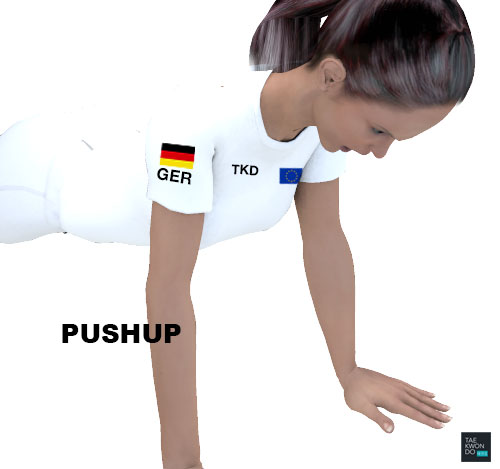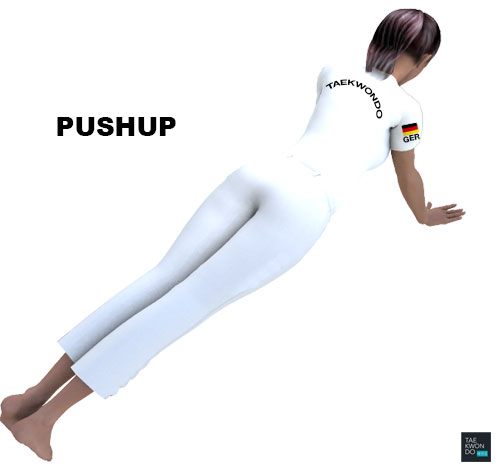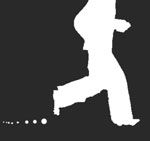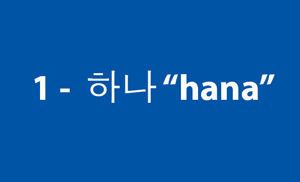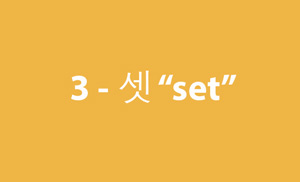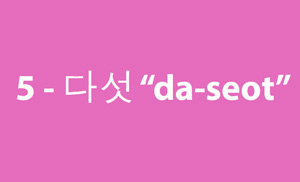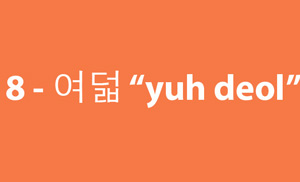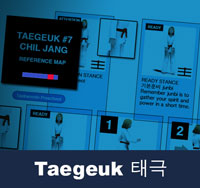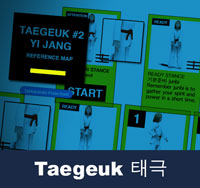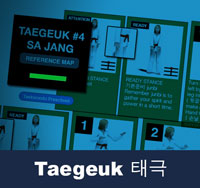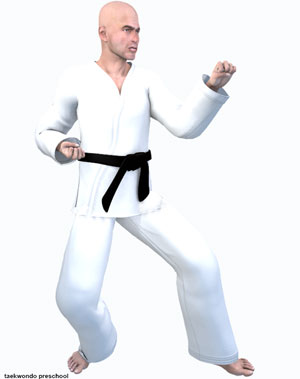Taekwondo 태권도Taekwondo Preschool
When you reach senior belt you are expected to guide the junior belts when they are beginning Taekwondo such as showing by example. To advance from one rank to the next, students typically complete promotion tests in which they demonstrate their proficiency in the various aspects of the art before a panel of judges or their teacher. View Taekwondo belt levels »
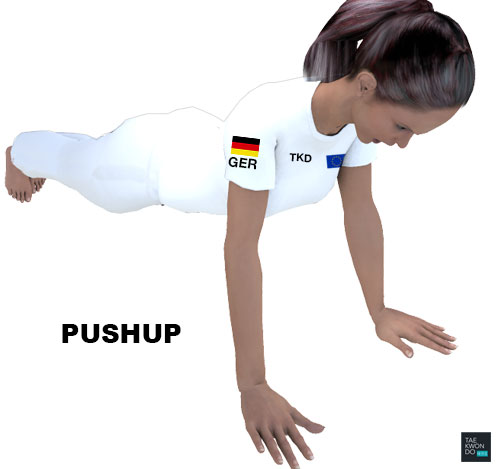
About Pushup
The risks and benefits of combining stretching with warming up are disputed, although it is generally believed that warming up prepares the athlete both mentally and physically.
* Please see a certified Master Instructor ( 사범님 sabeomnim ) for training. Proper guidance and instructions are needed to ensure safe training.
A push-up (or press-up) is a common calisthenics exercise performed in a prone position by raising and lowering the body using the arms. Push-ups exercise the pectoral muscles, triceps, and anterior deltoids, with ancillary benefits to the rest of the deltoids, serratus anterior, coracobrachialis and the midsection as a whole. Push-ups are a basic exercise used in civilian athletic training or physical education and commonly in military physical training. They are also a common form of punishment used in the military, school sport, or in some martial arts dojos. In the past this movement was called a floor dip.
Muscles Worked
While the push-up primarily targets the muscles of the chest, arms, and shoulders, support required from other muscles results in a wider range of muscles integrated into the exercise.
- Abdominals
- Deltoid
- Pectoralis major
- Triceps brachii
Variations
In the "full push-up", the back and legs are straight and off the floor. There are several variations besides the common push-up. These include bringing the thumbs and index fingers of both hands together (a "diamond pushup") as well as having the elbows pointed towards the knees. These variations are intended to put greater emphasis on the triceps or shoulder, rather than the chest muscles. When both hands are unbalanced or on uneven surfaces, this exercise works the body core. Raising the feet or hands onto elevated surfaces during the exercise emphasize the upper (minor) and lower (major) pectorals, respectively. Raising the hands with the aid of push-up bars or a dumbbell allows for greater ROM (range of motion) providing further stress for the muscles. In most push-up variations a person will be lifting about 65% of his or her body weight.
Planche Push-ups
An extremely difficult variation is to perform a push-up using only hands, without resting the feet on the floor, i.e. starting from and returning to the planche position. These are known as "planche push-ups". To do this variation, the body's center of gravity must be kept over the hands while performing the push-up by leaning forward while the legs are elevated in the air, which requires great strength and a high level of balance. The entire bodyweight is lifted in this variation.
Knuckle Push-ups
Another variation is to perform pushups on the knuckles of the fist, rather than with palms of the hands on the floor. This method is also commonly used in martial arts, such as Karate and Tae Kwon Do, and may be used in boxing training while wearing boxing gloves. The intent, in addition to building strength and conditioning, is to toughen the knuckles, wrist, and forearm in the punching position. This variation also reduces the amount of strain in the wrist, compared to the typical "palms on floor" approach, and so it is sometimes used by those with wrist injuries. Such practitioners will usually perform their knuckle pushups on a padded floor or a rolled-up towel, unlike martial artists, who may do bare-knuckle pushups on hard floors.
Maltese Push-ups
"Maltese push-ups" are a gymnastic variation of the push-up, in which the hands are positioned closer to the hips (as opposed to the pectorals), but with an extremely great distance between them.
Guillotine Push-Ups
The guillotine push-up is a form of push-up exercise done from an elevated position (either hands on elevated platforms or traditionally medicine balls) where in the practitioner lowers his chest, head, and neck (thus the name) past the plane of the hands. The goal is to stretch the shoulders and put extra emphasis on the muscles there.
One arm versions
Many of the push-up variations can be done using one arm instead of two. This will further increase the resistance put upon the trainee.

Other versions
There are some less difficult versions, which reduce the effort by supporting some of the body weight in some way. One can move on to the standard push-up after progress is made.
"Wall" push-ups are performed by standing close to a wall and pushing away from the wall with the arms; one can increase the difficulty by moving one's feet farther from the wall.
"Table" or "chair" push-ups are performed by pushing away from a table, chair, or other object. The lower the object, the more difficult the push-up. One should be sure that the object is securely stationary before attempting to push up from it.
"Modified" or "knee" push-ups are performed by supporting the lower body on the knees instead of the toes, which reduces the difficulty. This is useful for warm ups/downs, pyramids/drop sets, endurance training and rehab. It can also be used to train in a more explosive plyometric manner (like clapping pushups) when one can't perform them with the feet. It can also be used with the 1-arm variations as a transition.
"Three phase" push-ups involve simply breaking a standard push up into three components and doing each one slowly and deliberately. Participants usually start face down on the floor with hands outstretched either perpendicular or parallel to the body. The first phase involves the arms being brought palms down on a 90 degree angle at the elbows. The second phase involves the body being pushed into the up position. The third phase is returning to the starting position. This technique is commonly used after a large block of regular push ups, as it poses less stress and requires less effort.
"Diamond" or "Triceps" push-ups are done by placing both palms on the ground and touching together both thumbs and pointer fingers. This technique requires stronger triceps muscles than regular push-ups due to the fact that, at the bottom of the stroke, the forearm is nearly parallel to the ground and the elbow is almost completely flexed, resulting in much higher mechanical load on the triceps.
"Hollow-Body" push-ups are performed in the position gymnasts refer call the "hollow body". In the plank version of the hollow body, the shoulders are protracted into a pronounced curve in the upper back while the abdominal muscles are tightened and the legs are locked and squeezed together. This variation requires full-body tension to execute and results in greater integration of the hips, shoulders, and core.
Plyometrics
Two platforms are placed beside the trainee, one on either side. The exercise begins with the hands on either platform supporting the body, then the subject drops to the ground and explosively rebounds with a push-up, extending the torso and arms completely off the ground and returning the hands to the platforms.
Another is simply an explosive push-up where a person attempts to push quickly and with enough force to raise his or her hands several centimeters off the ground, with the body completely suspended on the feet for a moment, a variation of the drop push. This is necessary for performing 'clap push ups' - i.e. clapping the hands while in the air.
With push-ups, many possibilities for customization and increased intensity are possible. Some examples are: One hand can be set on a higher platform than the other or be farther away from the other to give more weight to the opposite arm/side of the body and also exercise many diverse muscles. One can perform push-ups by using only the tips of the fingers and thumb. For increased difficulty, push-ups can be performed on one arm or using weights.
Record Breakers and attempts
The first record for push-ups was documented by Guinness World Records: 6,006 non-stop push-ups by Charles Linster in 1965, October 5.
The record for the most push-ups non-stop was 10,507, set by Minoru Yoshida of Japan in October 1980. Minoru Yoshida's World Record was the last of its category for non-stop push-ups to be published by Guinness World Records. A new category, "Most Push-ups in 24 Hours," has since been introduced.
The current world record for most push-ups in 24 hours is by Charles Servizio (USA) who achieved 46,001 push-ups in just 21 hours, 6 minutes on 1993, April 24 to 25.
The world record for most two-handed backhand push-ups in one hour is 1,940 by Aman Sharma of the UK, set in 2007.
Doug Pruden (Canada) performed 1,025 one-arm push-ups on the back of the hand on 8 November 2008.
The Guinness World Record holder for backhanded push-ups, American John Morrow, completed 123 in one minute in 2006.
Muscles Worked Section
Abdominals - The rectus abdominis and transversus abdominis contract continually while performing push-ups to hold the body off the floor and keep the legs and torso aligned. The rectus abdominis spans the front of the abdomen and is the most prominent of the abdominal muscles. The transversus abdominis lies deep within the abdomen, wrapping around the entire abdominal area. Both muscles compress the abdomen, and the rectus abdominis also flexes the spine forward, although it does not execute this function when performing push-ups.
Deltoid - The anterior portion of the deltoid muscle is one of the major shoulder-joint horizontal adductors, moving your upper arms toward your chest during the upward phase of a push-up. It also helps control the speed of movement during the downward phase. The deltoid attaches to parts of the clavicle and scapula, just above the shoulder joint, on one end, and to the outside of the humerus bone on the other. Along with horizontal adduction, the anterior deltoid assists with flexion and internal rotation of the humerus within the shoulder socket.
Pectoralis major - The pectoralis major is another main horizontal adductor of the shoulder joint, so it performs the same functions as the anterior deltoid during a push-up. It also contributes to adduction, extension, flexion and internal rotation ranges of motion. The muscle is divided into clavicular and sternal parts. Both parts attach just outside the head of the humerus and run toward the center of your body. The parts then separate, with the clavicular part attaching to the inner two-thirds of the clavicle, and the sternal part to the front of the sternum and the first six ribs.
Triceps brachii - While the anterior deltoids and pectoralis major muscles work to horizontally adduct the upper arms during the upward phase of a push-up, the triceps brachii muscles, or triceps for short, are also hard at work extending the elbow joints so you can fully extend your arms. The triceps also control the speed of elbow-joint flexion during the downward phase of the exercise. The closer together you place your hands during a push-up, the harder the triceps work. The muscle is divided into three heads—the lateral head, long head and medial head. The lateral and medial heads attach to the back of the humerus bone and the long head attaches just behind the shoulder socket on one end; all three heads combine and attach to the back of your elbow on the other.
Difficulty of Warm-Up Exercise
The risks and benefits of combining stretching with warming up are disputed, although it is generally believed that warming up prepares the athlete both mentally and physically. The more difficult the warm-up, the more practice may be needed for the purpose of improving or mastering it, as in the phrase 'practice makes perfect'.
* Please see a certified Master Instructor ( 사범님 sabeomnim ) for training. Proper guidance and instructions are needed to ensure safe training.
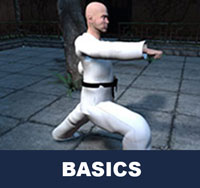
Taekwondo Basics
Here is where you can learn more about Taekwondo 태권도. Knowing the fundamental basics is very important for your learning path as you build your skills and knowledge. There are certain rules that need to be followed to show respect to the master ( 사범님 sabeomnim ), the instructors ( 교사님 gyosannim ), other practitioners and to the martial arts. They vary between schools but many have similar rules and guidelines. For more information View Taekwondo Basics »
Please follow the guidance of a certified Master Instructor or trainer when doing sports related activities. The article provided on this page is information that is widely available on Wikipedia article "Push-Up". Risk of injury can be reduced by completing an effective warm up consisting of a heart raiser to get your pulse up, followed by sport specific dynamic stretches (stretches whilst moving).
There are five tenets defined in the International Taekwondo Federation (ITF) and several more in World Taekwondo (WT).
Integrity ( 염치 yeom-chi ): "Although it may be similar, this form of integrity takes on a more wider role then defined in the common dictionary. In taekwondo, integrity means not only to determine what is right or wrong but also having the conscience to feel guilt if one has done wrong and to have the integrity stand up for what is right." View Taekwondo Tenets »
RESOURCES
This article uses material from the Wikipedia article "Push-Up", which is released under the Creative Commons Attribution-Share-Alike License 3.0.


